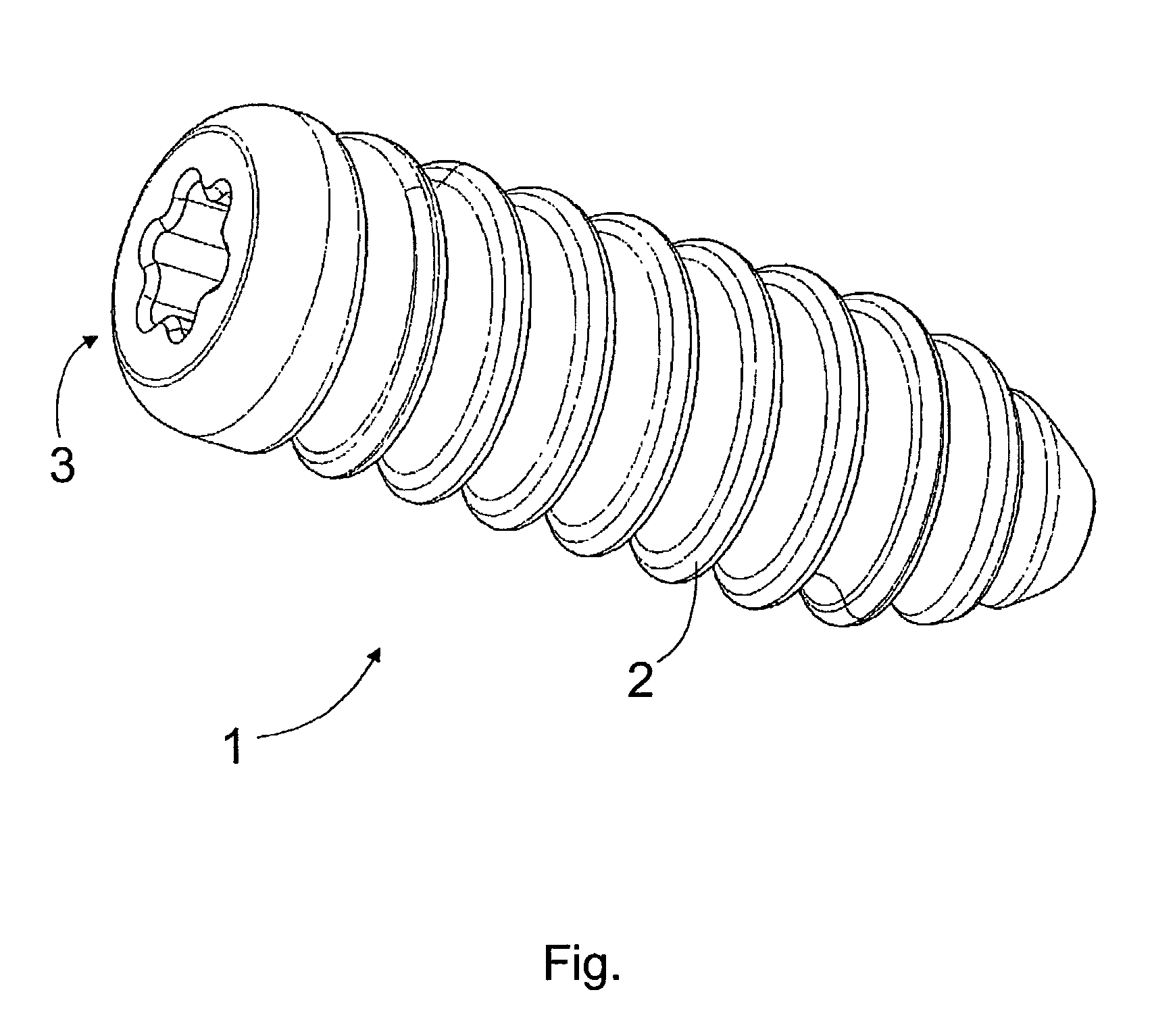Surgical implant
a surgical and implant technology, applied in the field of surgical implants, can solve the problems of inability to radiation sterilize the implant using the conventional sup, inability to distinguish the implant from the tissue, and inability to use biodegradable sutures
- Summary
- Abstract
- Description
- Claims
- Application Information
AI Technical Summary
Benefits of technology
Problems solved by technology
Method used
Image
Examples
example 1
[0027]The coloring agent D&C Green No. 6 was dissolved in a first batch of ethanol and D&C Violet No. 2 in a second batch of ethanol. Both coloring agent solutions were gamma-radiated such that the absorbed dose was over 25 kGy.
[0028]It was noted that the color of the first D&C Violet No. 2-dyed solution disappeared completely during radiation. However, there was a barely noticeable color alteration in the second D&C Green No. 6-dyed solution. The slight color alteration of the second solution was probably due to the fact that the coloring agent D&C Green No. 6 was prepared using as starting material the coloring agent D&C Violet No. 2, from which a 1.2-percent by weight residue remained in the coloring agent D&C Green No. 6. The disappearance of said residue caused the slight color alteration in the second solution from bluish green to bright green.
example 2
[0029]A master batch No. 1 was prepared from the coloring agent D&C Green No. 6 (Neelikon Food Dyes & Chemicals Ltd, India) and poly(L-lactide-co-D,L-lactide) 80:20 polymer crush (Purasorb PLD, Purac biochem b.v., the Netherlands) by dry mixing 0.3 grams of the coloring agent and 100 grams of the polymer in a Turbula T2F mixer during 30 minutes.
[0030]At the next stage, a polymer raw material mix No. 1 was dry mixed in a Turbula T2F mixer during 30 minutes, the materials in the mix being: A) poly(L-lactide-co-D,L-lactide) 80:20 polymer crush (Purasorb PLD, Purac biochem b.v., the Netherlands), B) poly(L-lactide-co-trimethylenecarbonate) 70:30 polymer crush (Resomer LT706, Boehringer Ingelheim Pharma KG, Germany), and C) the above-mentioned master batch No.1 at A:B:C=83.7:15:1.3. The color content of the thus prepared raw material mix No. 1 was calculated to be 0.0039%.
[0031]500 pieces of dyed biodegradable Ø 7×20 mm ACL screws were made of the raw material mix No. 1 by using a Fanuc ...
PUM
 Login to View More
Login to View More Abstract
Description
Claims
Application Information
 Login to View More
Login to View More - R&D
- Intellectual Property
- Life Sciences
- Materials
- Tech Scout
- Unparalleled Data Quality
- Higher Quality Content
- 60% Fewer Hallucinations
Browse by: Latest US Patents, China's latest patents, Technical Efficacy Thesaurus, Application Domain, Technology Topic, Popular Technical Reports.
© 2025 PatSnap. All rights reserved.Legal|Privacy policy|Modern Slavery Act Transparency Statement|Sitemap|About US| Contact US: help@patsnap.com


